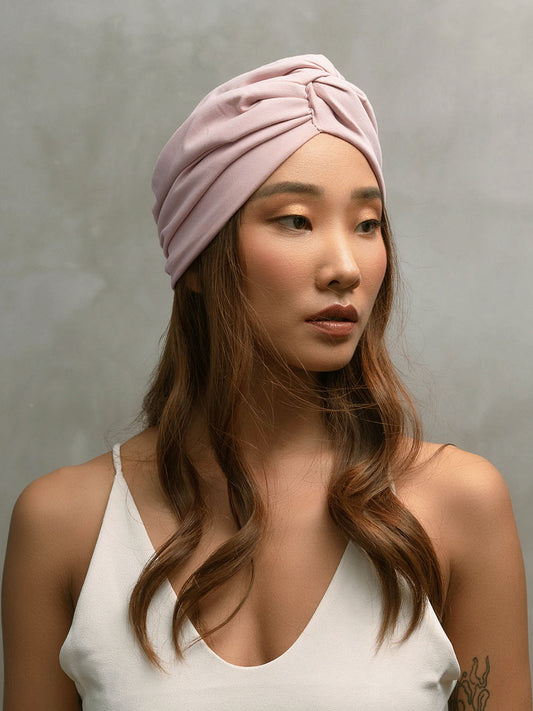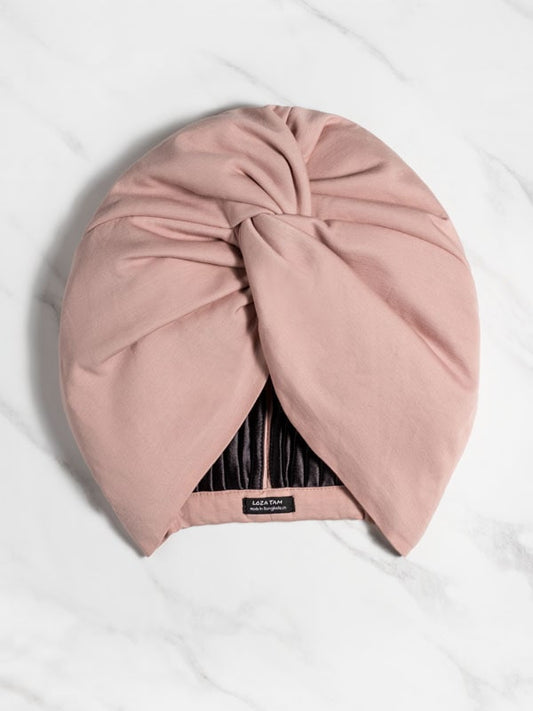Written By: Tameshia Rudd-Ridge
Confused about who can wear turbans, head wraps, headscarves, or hair coverings? It’s okay. A lot of people are as misconceptions and claims about cultural appropriation are widespread these days. As a result, one of the most common questions our team receives is who can wear Loza Tam products. As a woman and BIPOC owned company, our answer -- anyone who wants to look chic with minimal effort.
Why? Not one culture, peoples, or faith has exclusive license to be the sole wearers of head wraps, turbans, head scarves, or head coverings. In fact, many cultures and peoples across the globe have been wearing head coverings for centuries. The first well-documented records date back to the 13th Century BC Assyrian Empire (modern-day Middle East and North Africa) where laws required women to practice “veiling”. Veiling was used to mark the differences between women’s social standings and marital status. Throughout history, head coverings have been worn for a myriad of reasons. These include: spiritual beliefs, cultural significance, practicality, and fashion. No matter the reason, covering the head is a deeply personal choice. Keep reading below to learn more about the reasons people choose to cover their hair and celebrate the beautiful diversity of our world.
Spiritual Practice: Spiritual head wrapping or veiling is most commonly associated with women of Muslim faith, however, hair covering is an integral practice of many other faith traditions.

Cultural Significance: Head wraps hold cultural significance to many peoples and cultures across the world. You’ll see them worn in rituals, to special celebrations, or even as everyday wear.

Choosing to wear a hair covering that holds cultural significance to a culture you’re not directly linked to often comes with fear and claims of cultural appropriation. Rightfully so as there’s a very thin line between cultural appropriation and cultural appreciation. The best way to mitigate this fear or the embarrassment of insulting an entire culture is to use the resources at your hand. With greater access to other perspectives and cultures via technology, we have a greater responsibility to inquire and attempt to understand how cultural accessories are worn in context.
The easiest way to ensure you’re not appropriating a culture is to have conversations, friendships, and interactions with people of the culture you’re curious about online and/or in real life. Through these exchanges, you’ll learn the history and significance behind the head wrap or hair covering which makes it very difficult to appropriate it. That way, if a Nigerian friend invites you to take part in her wedding, you’ll know you should wear a ‘gele’ along with traditional garb. The most important thing to remember here is context.
Practicality and Functionality: Many women choose to wear head wraps because they’re one of the most practical, versatile, and functional accessories of all time. Scenarios in which a woman might reach for a head wrap:
- dealing with hair loss due to health challenges such as alopecia, cancer, and chemotherapy.
- protecting hair from harsh weather and climates
- keeping hair out the face during a workout, gardening, chores, traveling, etc.
- disguising a bad hair day
- to signify mourning
- saving a blowout or other new hairdo
- keeping a protective style fresh
- protecting her hair while sleeping
Fashion: Some folks choose to wear head wraps to make a bold statement, to take a look from meh to marvelous, to brighten their day, or simply because they feel like it. The key takeaway is wearing a head wrap boils down to personal choice. If you’re from a culture or faith that practices hair covering or rock a head wrap for reasons outside of those listed above, shoot us an email at customercare@lozatam.com
BROWSE OUR COLLECTION OF HEAD WRAPS


